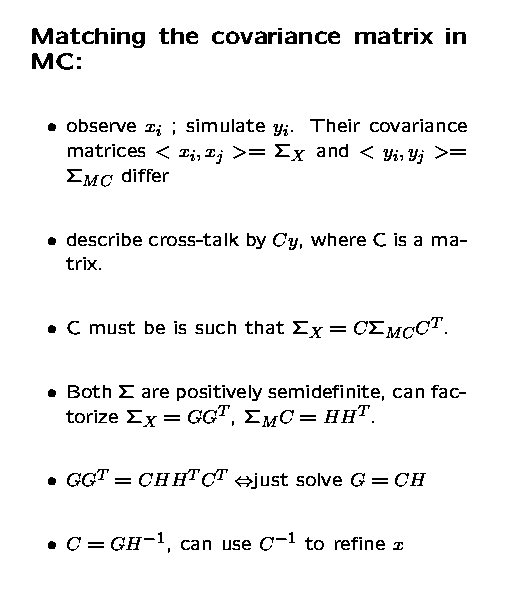SEARCH FOR CRITICAL FLUCTUATIONS IN PB+PB COLLISIONS AT THE CERN SPS.
Mikhail Kopytine, SUNY at Stony Brook, for the NA44 Collaboration.
Talk at the April 2000 APS Meeting.
Abstract :
NA44 uses a 512 channel Si pad array covering pseudorapidity 1.5 < eta
< 3.3 to study events of charged hadron production in Pb+Pb collisions
at the CERN SPS. We apply a multiresolution analysis, based on a
Discrete Wavelet Transform, to probe the texture of particle
distributions in individual events by simultaneous localization of
features in space and scale. We look for traces of a possible
second-order phase transition in the event characteristics. Measured
results are compared with a detailed simulation of the detector
response, using as input heavy ion event generators.
Date and time of the talk: May 01, 12:12 pm. Time limit -- 10 min.
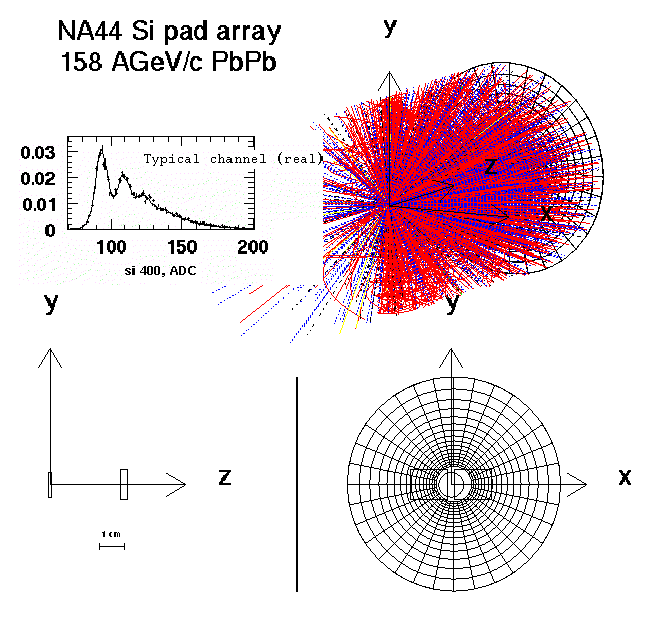
Commentary:
RQMD event in the GEANT simulation of the detector response.
Magnetic field and delta electron generation are on.
Target thickness is 1.15 g/cm**2. We only use delta-free side of the detector.
A note to NA44 members:
The actual geometrical off-set of the detector is shown as found by the
off-line analysis. In that analysis, I used the condition of maximum flatness
of
dN/d_phi in the true beam-center coordinate system to find displacement of
the detector with respect to the beam center.

Commentary:
Because the double differential d2N/d_eta/d_phi is independent of phi, dN/d_eta
= 2*pi*d2N/d_eta/d_phi.
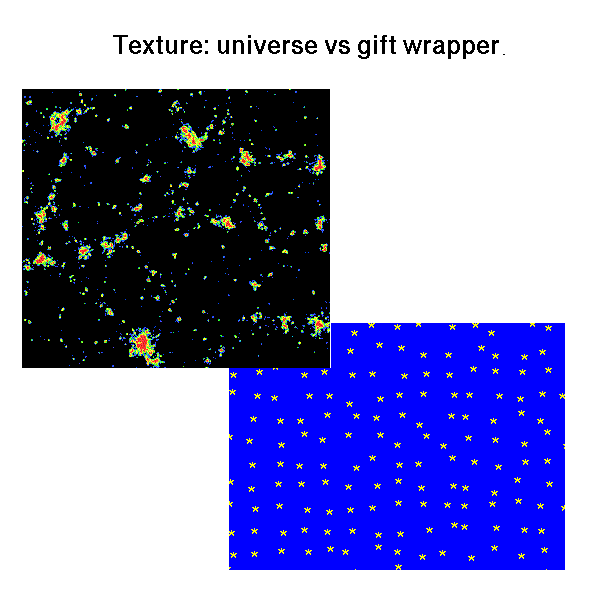
Commentary:
Top -- large scale distribution of matter in the Universe,
bottom -- a gift wrapper idea with space and stars.
Their comparison illustrates what we mean by "texture".
Texture is thus related to the origin of the things we study.
Q: Why develop new multiparticle hadronic observables ?
A: We wish to study multiparticle correlations to look for collective
phenomena, a phase transition being one.
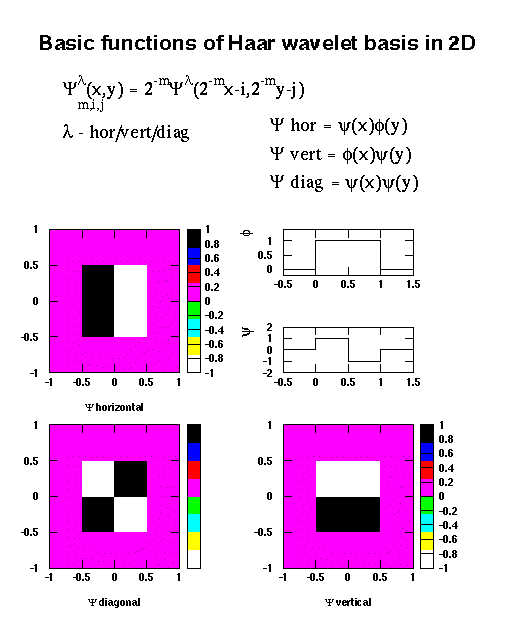
Commentary:
The family of 2D functions, obtainable from the three color functions by
translations (characterized by integers i and j) and dilation/contraction
(integer m), form an orthonormal basis in the space of piece-wise continuous
functions whose second power in integrable.
[1]
Decomposition in this basis can be used to extract power spectra of
fluctuations in the density fields.
[2]
Credit:
In this work, I use
WAILI
library of wavelet software.

Commentary:
DWT (Discrete Wavelet Transformation) decomposition of the tree different
kinds of an image: a chess board,
a smooth gradient surface, and a set of 1000 random white noise field samples.
The first two cases are opposite in the scale localization of the information
they carry. The third case has a remarkable property of scale-independence.
In the words of Norbert Wiener ("Generalized Harmonic Analysis"):
"... the energy of a haphazard sequence of impulses is uniformly distributed
in frequency. ... Theoretically this equipartition of energy might be used
in the absolute calibration of acoustical instruments."
Q: Why be interested in the power spectrum ?
A: because the power spectrum decomposes the texture of every event
into scale components. Different subjects of dynamical description can couple
differently with different scales. The second order phase transition is known
to enhance the LARGE SCALE COMPONENT (long wavelength) of the texture.
Examples -- critical opalescense, ferromagnetics below Curie point.
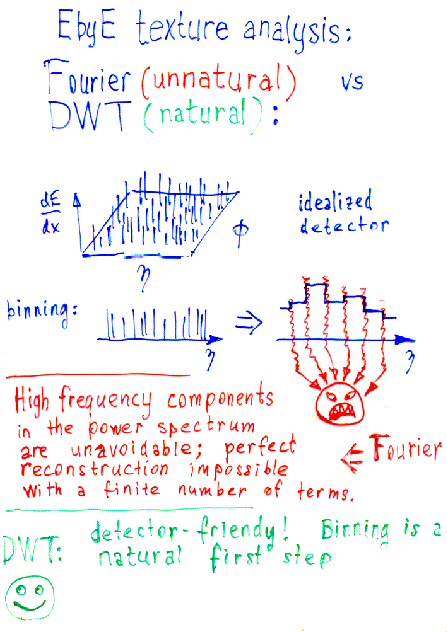
Q: Why use DWT to study power spectrum ?
A: because DWT, unlike Fourier transform, can do scale decomposition
of a single event without being disturbed by the inherent spikyness
/discreteness
of the observable /binning of the detector.
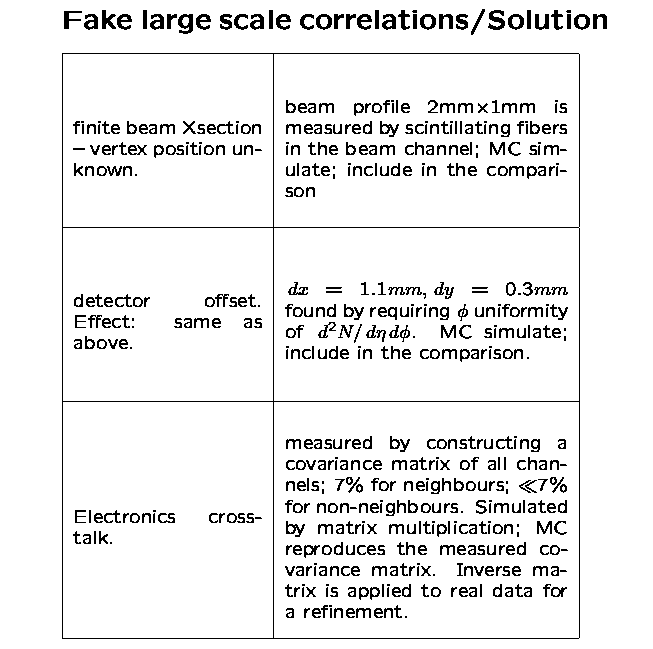

Commentary:
-
The vertical axis is in arbitrary units.
-
The cross-talk refined data retains two other sources of fake enhancement in
the coarse scale, namely, finite beam cross-section and the geometrical offset.
-
my "dumb" event generator whose results are shown by crosses does not respect
energy-momentum conservation, but just randomly throws
pions according to the overall dN/dy and thermal 1/mT dN/dmT, making sure that
the the sample of simulated events has multiplicity distribution with first and
second moments seen in the data.
-
Both HIJING and RQMD samples have multiplicity lower than is
measured by the Si.
The cross-talk gets more important in the high multiplicity environment.
Most likely, this is the true reason
behind larger coarse scale enhancement in the data.

References :
[1] Ingrid Daubechies, "Ten Lectures on Wavelets"
[ back to the context ]
[2] L-Z.Fang, J.Pando, "Large-scale Structures revealed by
Wavelet Decomposition", astro-ph/9701228 29 Jan 1997
(find it!)
[ back to the context]
Useful info :
Web-based collection of wavelet-related
information
Click to E-mail your comments:
(Mikhail.Kopytine@sunysb.edu)
APPENDIX: some backup slides


